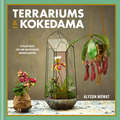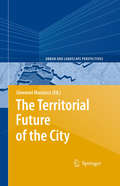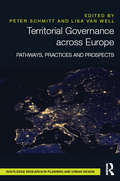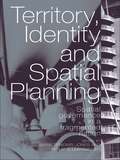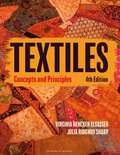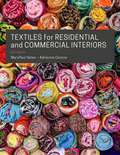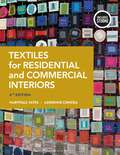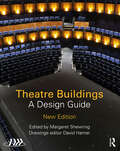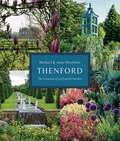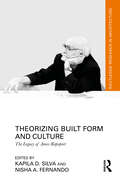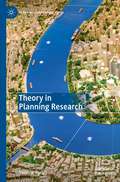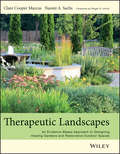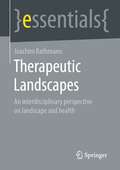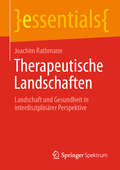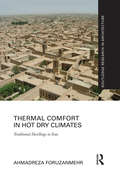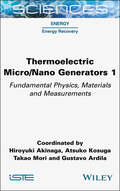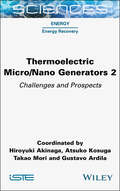- Table View
- List View
Terrariums & Kokedama
by Alyson MowatTerrariums, aeriums and kokedama (Japanese for 'moss ball') have exploded in popularity and making them at home is surprisingly easy and a wonderful way to keep plants in our homes. In this inspirational guide, Alyson Mowat shares her creative ideas for greening up your home and workspace, with 20 projects to make your own botanical beauties and containers to show them off. Alyson guides you through the information and tools you'll need to help cultivate your green thumb, before sharing her tips for making your own unique containers, such as a concrete planter or kokedama tray, choosing the best plants for your space and desired effort, and even includes tips to propagate them. With names such as Through the Looking Glass, Plant-O-Saurus and Hung Up on You, the projects are fun and quirky, bringing the outside in. With Alyson's keen, stylish eye, you can create chic, low-maintenance greenery to cover your home or work.
The Territorial Future of the City (Urban and Landscape Perspectives #3)
by Giovanni MacioccoThe volume brings together contributions by leading scholars and young academics with experience in the urban potential of the territory in situations not necessarily linked to the dense metropolis, its compact form or to city sprawl. What brings these scholars together is their common reflection on this central theme, though from varied disciplinary and experimental backgrounds. They offer new forms of representing social and spatial processes of the contemporary society.
Territorial Governance across Europe: Pathways, Practices and Prospects
by Peter Schmitt Lisa Van WellThis book provides a comprehensive framework for analysing, comparing and promoting territorial governance in policy relevant research. It reveals in-depth considerations of the emergence, state-of-the art and evolution of the concept of territorial governance. A unique series of ten case studies across Europe, from neighbourhood planning in North Shields in the North East of England to climate change adaptation in the Baltic Sea Region, provides far-reaching insights into a number of key elements of territorial governance. The book draws generalised empirically-based conclusions and discusses modes of transferability of ‘good practices’. A number of suggestions are presented as to how the main findings from this book can inform theories of territorial governance and spatial policy and planning. Territorial Governance across Europe will be of considerable interest to scholars around the world who are concerned with European studies, regional policy, urban and regional planning, and human and political geography. It provides a solid debate on discourses, theories, concepts and methods around the notion of territorial governance as well as a number of empirical findings from various contexts across Europe. It specifically targets scholars involved in policy-relevant research.
Territorial Governance across Europe: Pathways, Practices and Prospects
by Peter Schmitt Lisa Van WellThis book provides a comprehensive framework for analysing, comparing and promoting territorial governance in policy relevant research. It reveals in-depth considerations of the emergence, state-of-the art and evolution of the concept of territorial governance. A unique series of ten case studies across Europe, from neighbourhood planning in North Shields in the North East of England to climate change adaptation in the Baltic Sea Region, provides far-reaching insights into a number of key elements of territorial governance. The book draws generalised empirically-based conclusions and discusses modes of transferability of ‘good practices’. A number of suggestions are presented as to how the main findings from this book can inform theories of territorial governance and spatial policy and planning. Territorial Governance across Europe will be of considerable interest to scholars around the world who are concerned with European studies, regional policy, urban and regional planning, and human and political geography. It provides a solid debate on discourses, theories, concepts and methods around the notion of territorial governance as well as a number of empirical findings from various contexts across Europe. It specifically targets scholars involved in policy-relevant research.
Territory, Identity and Spatial Planning: Spatial Governance in a Fragmented Nation
by Mark Tewdwr-Jones Philip AllmendingerThis book provides a multi-disciplinary study of territory, identity and space in a devolved UK, through the lens of spatial planning. It draws together leading internationally renowned researchers from a variety of disciplines to address the implications of devolution upon spatial planning and the rescaling of UK politics. Each contributor offers a different perspective on the core issues in planning today in the context of New Labour’s regional project, particularly the government’s concern with business competitiveness, and key themes are illustrated with important case studies throughout.
Territory, Identity and Spatial Planning: Spatial Governance in a Fragmented Nation
by Mark Tewdwr-Jones Philip AllmendingerThis book provides a multi-disciplinary study of territory, identity and space in a devolved UK, through the lens of spatial planning. It draws together leading internationally renowned researchers from a variety of disciplines to address the implications of devolution upon spatial planning and the rescaling of UK politics. Each contributor offers a different perspective on the core issues in planning today in the context of New Labour’s regional project, particularly the government’s concern with business competitiveness, and key themes are illustrated with important case studies throughout.
Textiles: Concepts and Principles - with STUDIO
by Virginia Hencken Elsasser Julia Ridgway Ridgway SharpTextiles: Concepts and Principles, Fourth Edition provides a thorough approach to the fundamentals of textiles in a readable, nontechnical style, focusing on the interrelationship of textile components to help students understand and predict textile properties and performance to ultimately choose the best textile for their final product. With new co-author Julia Ridgway Sharp, Virginia Hencken Elsasser covers the global textile industry and components of textile products, summarizes laws and regulations affecting the textile industry, and looks into career possibilities, properties, care instructions, end uses of natural and manufactured fibers, yarns, fabrics, coloration and finishes, and the overall impact of textiles on the environment.New to this Edition-Updated information on sustainability, laws and regulations, and technological advancements- New Did you know? feature in each chapter provides thoughtful insights into new developments in the textile industry-Inclusion of imperial and metric measurements for a more global scopeSTUDIO Features Include-Study smarter with self-quizzes featuring scored results and personalized study tips -Review concepts with flashcards of essential vocabulary -Download additional exercises to practice your skills Instructor Resources-Instructor's Guide with Test Bank provides suggestions for planning the course and using the text in the classroom, supplemental assignments, and lecture notes-Test Bank includes sample test questions for each chapter-PowerPoint® presentations include images from the book and provide a framework for lecture and discussion
Textiles for Residential and Commercial Interiors: - with STUDIO
by MaryPaul Yates Adrienne Concra"I adopt this text due to the strong applications within the fields of Interior Design and Architecture. It shows practical knowledge that students need upon graduation. It should be kept as reference for all new graduates." Victoria Runge, University of Tennessee, Chattanooga, USALearn how to select textiles for every type of residential and commercial interior. The book has the most current fiber and fabric information about household and institutional textiles, and commercial and residential textiles for upholstered furniture, windows, walls, and floorcoverings. More than 500 color line drawings and photographs illustrate fibers, yarns, fabrics, manufacturing equipment, coloring, finishings, and end products. Textiles for Residential and Commercial Interiors STUDIO-an online study tool! · Study smarter with self-quizzes featuring scored results and personalized study tips· Review vocabulary with flashcards PLEASE NOTE: Purchasing or renting this ISBN does not include access to the STUDIO resources that accompany this text. To receive free access to the STUDIO content with new copies of this book, please refer to the book + STUDIO access card bundle ISBN 9781501326660.
Textiles for Residential and Commercial Interiors: - with STUDIO
by MaryPaul Yates Adrienne ConcraLearn how to choose the right type of textile for your residential and commercial interior design. This book includes important information about fiber and fabrics for household and institutional textiles, and commercial and residential textiles. It also touches on specific design techniques such as the latest textile printing methods and technologies, the newest performance-related finishes, proper window treatment, and the best environmentally conscious sustainability approaches. The line drawings and photographs show yarns, weaving, manufacturing equipment, fibers, fabrics used in a variety of interior spaces, and many more. New to this Edition- Updated to include the newest codes and guidelines for fabric performance and evaluation - Exploration of new textile printing methods and technologies- Updated fire safety methods and flammability testing STUDIO Features Include- Study smarter with self-quizzes featuring scored results and personalized study tips- Review concepts with flashcards of terms and definitions Instructor Resources- Instructor's Guide to help integrate the text into your classroom- PowerPoint slides for every chapter
Theatre Buildings: A Design Guide
by Association of British Theatre Technicians (ABTT) Margaret ShewringIn 2021, its Diamond Jubilee year, the Association of British Theatre Technicians (ABTT) undertook to revise Theatre Buildings: A Design Guide (Routledge, 2010). This new edition (Routledge, 2023) has substantially re-written text with fresh images and entirely new reference projects, providing essential guidance for all those engaged in the design of theatre buildings. Edited by Margaret Shewring (Emeritus Reader, University of Warwick, former Director of the Postgraduate Diploma and MA in Theatre Consultancy), this new publication is written by a team of international experts, architects, theatre consultants, acousticians, engineers and industry professionals led by Tim Foster (Foster Wilson Size) and Robin Townley (CEO of the ABTT). It provides an invaluable resource for those looking to build, remodel or conserve theatre buildings, taking into account the significant changes which have taken place in the last twelve years in all aspects of theatre design and technical practice. It locates those changes in the wider context of the need for sustainability in the theatre industry in response to the climate emergency, inclusivity, diversity of access, placemaking and concerns for health and wellbeing. This new edition provides guidance for anyone who seeks inspiration and encouragement to create or improve a place of entertainment or who seeks to understand what might be required to accommodate an audience for the presentation of live performance and the successful use, operation and organisation of such a venue. Its generous format and the thirty-two new reference projects, more than 260 high-resolution colour images and 175 diagrams and specially commissioned plans make it accessible and informative both to the general reader and the professional specialist.
Theatre Buildings: A Design Guide
by Margaret Shewring David HamerIn 2021, its Diamond Jubilee year, the Association of British Theatre Technicians (ABTT) undertook to revise Theatre Buildings: A Design Guide (Routledge, 2010). This new edition (Routledge, 2023) has substantially re-written text with fresh images and entirely new reference projects, providing essential guidance for all those engaged in the design of theatre buildings. Edited by Margaret Shewring (Emeritus Reader, University of Warwick, former Director of the Postgraduate Diploma and MA in Theatre Consultancy), this new publication is written by a team of international experts, architects, theatre consultants, acousticians, engineers and industry professionals led by Tim Foster (Foster Wilson Size) and Robin Townley (CEO of the ABTT). It provides an invaluable resource for those looking to build, remodel or conserve theatre buildings, taking into account the significant changes which have taken place in the last twelve years in all aspects of theatre design and technical practice. It locates those changes in the wider context of the need for sustainability in the theatre industry in response to the climate emergency, inclusivity, diversity of access, placemaking and concerns for health and wellbeing. This new edition provides guidance for anyone who seeks inspiration and encouragement to create or improve a place of entertainment or who seeks to understand what might be required to accommodate an audience for the presentation of live performance and the successful use, operation and organisation of such a venue. Its generous format and the thirty-two new reference projects, more than 260 high-resolution colour images and 175 diagrams and specially commissioned plans make it accessible and informative both to the general reader and the professional specialist.
Thenford: The Creation of an English Garden
by Anne Heseltine Michael HeseltineThis book is the story of one garden and one family, over a 40-year time period. In their own words, Michael and Anne Heseltine describe the ups and downs of how they set about transforming and expanding a wild, overgrown and often dilapidated woodland into the magnificent garden they have today. Today, the garden at Thenford has an arboretum which contains more than 3,500 different species of trees and shrubs, including rare plants which were wild-collected by well known plantsmen including Roy Lancaster OBE, Allen Coombes, Keith Rushforth and Chris Chadwell. It is also well-known for its sculpture garden, which has an eclectic collection of work ranging from a white marble Tazza fountain to an enormous statue of Lenin. Beautifully illustrated with both professional photographs and private family images, this personal story of the creation of an extraordinary garden will delight horticultural experts and novices alike.
Theorizing Built Form and Culture: The Legacy of Amos Rapoport (Routledge Research in Architecture)
by Kapila D. Silva Nisha A. FernandoIn this collection of essays, Theorizing Built Form and Culture: The Legacy of Amos Rapoport – a felicitation volume to celebrate the significance of Professor Amos Rapoport's lifelong scholarship – scholars from around the world discuss the analytical relevance, expansion, and continuing application of these contributions in developing an advanced understanding of mutual relationships between people and built environments across cultures.Professor Amos Rapoport has espoused an intellectual and theoretical legacy on environmental design scholarship that explains how cultural factors play a significant role in the ways people create and use environments as well as the way environments, in turn, influence people’s behavior. This volume presents a hitherto-not-seen, unique, and singular work that simultaneously articulates a cohesive framework of Rapoport’s architectural theories and demonstrates how that theoretical approach be used in architectural inquiry, education, and practice across environmental scales, types, and cultural contexts. It also acknowledges, for the very first time, how this theoretical legacy has pioneered the decolonizing of the Eurocentric approaches to architectural inquiry and has thus privileged an inclusive, cross-cultural perspective that laid the groundwork to understand and analyze non-Western design traditions. The book thus reflects a wide range of cross-cultural and cross-contextual range to which Professor Rapoport’s theories apply, a general notion of theoretical validity he always advocated for in his own writings.The volume is a paramount source for scholars and students of architecture who are interested in understanding how culture mediates the creation, use, and preservation of the built environment.
Theorizing Built Form and Culture: The Legacy of Amos Rapoport (Routledge Research in Architecture)
In this collection of essays, Theorizing Built Form and Culture: The Legacy of Amos Rapoport – a felicitation volume to celebrate the significance of Professor Amos Rapoport's lifelong scholarship – scholars from around the world discuss the analytical relevance, expansion, and continuing application of these contributions in developing an advanced understanding of mutual relationships between people and built environments across cultures.Professor Amos Rapoport has espoused an intellectual and theoretical legacy on environmental design scholarship that explains how cultural factors play a significant role in the ways people create and use environments as well as the way environments, in turn, influence people’s behavior. This volume presents a hitherto-not-seen, unique, and singular work that simultaneously articulates a cohesive framework of Rapoport’s architectural theories and demonstrates how that theoretical approach be used in architectural inquiry, education, and practice across environmental scales, types, and cultural contexts. It also acknowledges, for the very first time, how this theoretical legacy has pioneered the decolonizing of the Eurocentric approaches to architectural inquiry and has thus privileged an inclusive, cross-cultural perspective that laid the groundwork to understand and analyze non-Western design traditions. The book thus reflects a wide range of cross-cultural and cross-contextual range to which Professor Rapoport’s theories apply, a general notion of theoretical validity he always advocated for in his own writings.The volume is a paramount source for scholars and students of architecture who are interested in understanding how culture mediates the creation, use, and preservation of the built environment.
Theory in Planning Research (Planning, Environment, Cities)
by Yvonne RydinDoing research is an essential element of almost all programmes in planning studies as well as related areas such as geography and urban studies, from undergraduate, through Masters to doctoral programmes. While most texts on such research emphasise methodologies, this book is unique in addressing how theoretical frameworks and perspectives can inform research activity. Providing both a concise introduction to a wide range of such theories and detailed engagement with cases of planning research, it provides the reader with the insights necessary to conduct theory-informed research. It offers an understanding of how the choice of a theoretical framework has implications for the focus of the research, the precise research questions addressed and the methodologies that will be most effective in answering those questions. Through practical advice and published examples it will support planning researchers in doing stronger, more widely-applicable research, which answers key questions about planning systems and their role within our societies.
Therapeutic Landscapes: An Evidence-Based Approach to Designing Healing Gardens and Restorative Outdoor Spaces
by Clare Cooper Marcus Naomi A SachsThis comprehensive and authoritative guide offers an evidence-based overview of healing gardens and therapeutic landscapes from planning to post-occupancy evaluation. It provides general guidelines for designers and other stakeholders in a variety of projects, as well as patient-specific guidelines covering twelve categories ranging from burn patients, psychiatric patients, to hospice and Alzheimer's patients, among others. Sections on participatory design and funding offer valuable guidance to the entire team, not just designers, while a planting and maintenance chapter gives critical information to ensure that safety, longevity, and budgetary concerns are addressed.
Therapeutic Landscapes: An Evidence-Based Approach to Designing Healing Gardens and Restorative Outdoor Spaces
by Clare Cooper Marcus Naomi A SachsThis comprehensive and authoritative guide offers an evidence-based overview of healing gardens and therapeutic landscapes from planning to post-occupancy evaluation. It provides general guidelines for designers and other stakeholders in a variety of projects, as well as patient-specific guidelines covering twelve categories ranging from burn patients, psychiatric patients, to hospice and Alzheimer's patients, among others. Sections on participatory design and funding offer valuable guidance to the entire team, not just designers, while a planting and maintenance chapter gives critical information to ensure that safety, longevity, and budgetary concerns are addressed.
Therapeutic Landscapes: An Interdisciplinary Perspective on Landscape and Health (essentials)
by Joachim RathmannJoachim Rathmann presents the interdisciplinary relationships between landscapes and health. Nature is to be regarded as an elementary health resource, because movement in near-natural surroundings has demonstrably positive influences on human health and is summarized in many ways in the concept of "therapeutic landscapes". Natural areas offer an important resource for strengthening health, especially to an aging society, which can also be measured economically. The author presents natural science, social science, and humanities research in a clear, understandable, and concise manner for a broad readership. At the same time he gives suggestions for a conscious handling of the sensitive resource landscape and for a regular observation of nature. This springer essential is a translation of the original German 1st edition essentials,Therapeutic landscapes by Joachim Rathmann, published by Springer Fachmedien Wiesbaden GmbH, part of Springer Nature in 2020.The translation was done with the help of artificial intelligence (machine translation by the service DeepL.com). A subsequent human revision was done primarily in terms of content, so that the book will read stylistically differently from a conventional translation. Springer Nature works continuously to further the development of tools for the production of books and on the related technologies to support the authors.
Therapeutische Landschaften: Landschaft und Gesundheit in interdisziplinärer Perspektive (essentials)
by Joachim RathmannJoachim Rathmann stellt die interdisziplinären Bezüge von Landschaften und Gesundheit dar. Die Natur ist als elementare Gesundheitsressource zu betrachten, denn Bewegung in naturnaher Umgebung hat nachweislich positive Einflüsse auf die menschliche Gesundheit und wird im Konzept der „Therapeutischen Landschaften“ vielfältig zusammengefasst. Naturräume bieten vor allem einer älter werdenden Gesellschaft eine wichtige, auch ökonomisch messbare Ressource für die Stärkung von Gesundheit. Der Autor bereitet natur-, sozial,- und geisteswissenschaftliche Untersuchungen für eine breit gefächerte Leserschaft verständlich, anschaulich und übersichtlich auf. Gleichzeitig gibt er Anregungen für einen bewussten Umgang mit der sensiblen Ressource Landschaft und zu einer regelmäßigen Naturbeobachtung.
Thermal Comfort in Hot Dry Climates: Traditional Dwellings in Iran (Routledge Research in Architecture)
by Ahmadreza ForuzanmehrWith increases in global temperatures, the risk of overheating is expected to rise around the world. This results in a much higher dependency upon energy-intensive cooling systems and air-conditioners to provide thermal comfort, but how sustainable is this in a world where problems with the production of electricity are predicted? Vernacular houses in hot and dry central Iran have been adapted to the climate through passive cooling techniques, and this book provides a valuable assessment of the thermal performance of such housing. Shedding new light on the ability of traditional housing forms to provide thermal comfort, Thermal Comfort in Hot Dry Climates identifies the main cooling systems and methods in traditional houses in central Iran, and examines how architectural elements such as central courtyards, distinct seasonal rooms, loggias, basements and wind-catchers can contribute to the provision of thermal comfort in vernacular houses.
Thermal Comfort in Hot Dry Climates: Traditional Dwellings in Iran (Routledge Research in Architecture)
by Ahmadreza ForuzanmehrWith increases in global temperatures, the risk of overheating is expected to rise around the world. This results in a much higher dependency upon energy-intensive cooling systems and air-conditioners to provide thermal comfort, but how sustainable is this in a world where problems with the production of electricity are predicted? Vernacular houses in hot and dry central Iran have been adapted to the climate through passive cooling techniques, and this book provides a valuable assessment of the thermal performance of such housing. Shedding new light on the ability of traditional housing forms to provide thermal comfort, Thermal Comfort in Hot Dry Climates identifies the main cooling systems and methods in traditional houses in central Iran, and examines how architectural elements such as central courtyards, distinct seasonal rooms, loggias, basements and wind-catchers can contribute to the provision of thermal comfort in vernacular houses.
Thermoelectric Micro / Nano Generators, Volume 1: Fundamental Physics, Materials and Measurements
by Hiroyuki Akinaga Atsuko Kosuga Takao Mori Gustavo ArdilaThis book explores a key technology regarding the importance of connections via an Internet of Things network and how this helps us to easily communicate with others and gather information. Namely, what would happen if this suddenly became unavailable due to a shortage of power or electricity? Using thermoelectric generators is a viable solution as they use the heat around us to generate the much-needed electricity for our technological needs. This first volume explores the computational and data-driven development of these thermoelectric generators, as well as the use of various abundant materials such as copper and silver chalcogenides and nanocarbons. It also offers reviews on universal property enhancement principles and the case of strongly correlated oxides, and goes on to explore the metrology of the thermal properties of thermoelectric generators, detailing methods of how to measure the absolute Seebeck coefficient using the Thomson effect and the thermal diffusivity of thin films using the ultrafast laser flash method.
Thermoelectric Micro / Nano Generators, Volume 1: Fundamental Physics, Materials and Measurements
by Hiroyuki Akinaga Atsuko Kosuga Takao Mori Gustavo Adolfo Ardila RodriguezThis book explores a key technology regarding the importance of connections via an Internet of Things network and how this helps us to easily communicate with others and gather information. Namely, what would happen if this suddenly became unavailable due to a shortage of power or electricity? Using thermoelectric generators is a viable solution as they use the heat around us to generate the much-needed electricity for our technological needs. This first volume explores the computational and data-driven development of these thermoelectric generators, as well as the use of various abundant materials such as copper and silver chalcogenides and nanocarbons. It also offers reviews on universal property enhancement principles and the case of strongly correlated oxides, and goes on to explore the metrology of the thermal properties of thermoelectric generators, detailing methods of how to measure the absolute Seebeck coefficient using the Thomson effect and the thermal diffusivity of thin films using the ultrafast laser flash method.
Thermoelectric Micro / Nano Generators, Volume 2: Challenges and Prospects
by Hiroyuki Akinaga Atsuko Kosuga Takao Mori Gustavo ArdilaThis book explores a key technology regarding the importance of connections via an Internet of Things network and how this helps us to easily communicate with others and gather information. Namely, what would happen if this suddenly became unavailable due to a shortage of power or electricity? Using thermoelectric generators is a viable solution as they use the heat around us to generate the much-needed electricity for our technological needs. This second volume on the challenges and prospects of thermoelectric generators covers the reliability and durability of thermoelectric materials and devices, the effect of microstructures on the understanding of electronic properties of complex materials, thermoelectric nanowires, the impact of chemical doping or magnetism, thermoelectric generation using the anomalous Nernst effect, phonon engineering, the current state and future prospects of thermoelectric technologies, transition metal silicides, and past, present and future applications of thermoelectrics.
Thermoelectric Micro / Nano Generators, Volume 2: Challenges and Prospects
by Hiroyuki Akinaga Atsuko Kosuga Takao Mori Gustavo Adolfo Ardila RodriguezThis book explores a key technology regarding the importance of connections via an Internet of Things network and how this helps us to easily communicate with others and gather information. Namely, what would happen if this suddenly became unavailable due to a shortage of power or electricity? Using thermoelectric generators is a viable solution as they use the heat around us to generate the much-needed electricity for our technological needs. This second volume on the challenges and prospects of thermoelectric generators covers the reliability and durability of thermoelectric materials and devices, the effect of microstructures on the understanding of electronic properties of complex materials, thermoelectric nanowires, the impact of chemical doping or magnetism, thermoelectric generation using the anomalous Nernst effect, phonon engineering, the current state and future prospects of thermoelectric technologies, transition metal silicides, and past, present and future applications of thermoelectrics.
